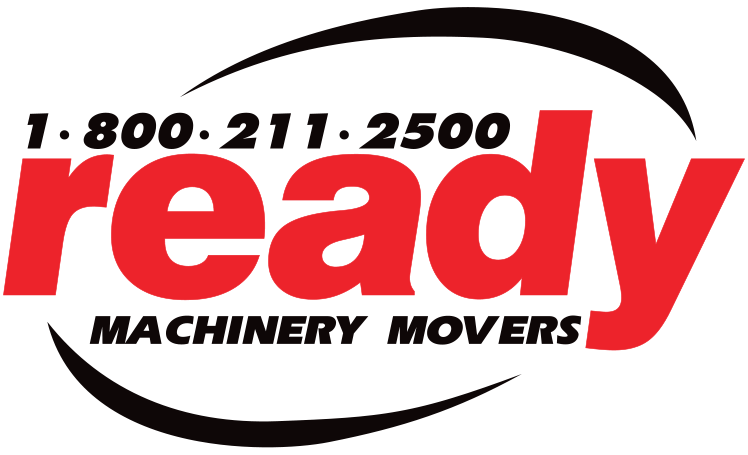As neighbouring countries, Canada and the United States of America (USA) have established an outstanding economic relationship for many years. This business relationship entices many Canadian exporters to exchange goods and services with the US.
Although shipping heavy machinery from Canada to the US may seem complicated at the start, finding a reliable shipping partner that offers export packaging and overseas shipping services and will walk you through from start to finish of the shipping process.
Documents Required
You must also sort out and gather all the required transit documents and invoices, as well as the necessary insurances should your existing policy does not cover shipping. If you are shipping from Canada to the US, secure and complete all your custom and shipping documents. Depending on the shipment product, the key documents required include:
- Commercial Invoice – When you are shipping to the US, you will be asked to produce two copies of the commercial invoice of the machine. One copy should accompany the freight from the point of origin/pickup to customs clearance, and the other is attached to the Bill of Lading. The commercial invoice documents the full product description, accurate valuations, and currency information.
- NAFTA Certificate of Origin – The Certificate of Origin is a trilaterally agreed-upon document used by Canada, USA, and Mexico to determine that the imported goods are qualified to receive preferential tariff treatment as specified by the North American Free Trade Agreement (NAFTA). The exporter must provide complete information on the Certificate of Origin as it will also be used as a basis for the Exporter’s Certificate of Origin. Without this form, each consignment can be priced at the highest rates, and the US Customs may deny the product entry into the country. The CBP Form 434 covers either a single or multiple importations of identical products. Blanket certificates refer to the paperwork covering numerous shipments and are applied to products imported within a twelve-month period as specified on the document.
- Straight Bill of Lading – the Bill of Lading (BoL) is a legally binding document that serves as the contract between the freight forwarder and shipper. However, it is the freight forwarder’s responsibility to fill out the information specified on the BoL. It contains relevant details regarding the freight shipment process and invoice. It should be consistent with the information provided on the Commercial Invoice (e.g. complete and accurate product description). It should also clearly indicate vital information, including:
Type of clearance preferred by the consignee
Name of the partner Customs Broker or appointed agents at the frontier port or inland sufferance warehouse.
Predetermined destination of the products
Agreed terms and condition for the transportation of the products
- Customs Clearance – The exporter should produce two copies of customs clearance: one to accompany the freight and the other is attached to the BoL. Write “PARS Clearance” on the Canada Customs Invoice if the BoL indicates a border clearance.
Cross-Border Shipping Tips
Overseas shipping may seem complicated, especially to those who are unfamiliar with the ocean freight industry. Since each country has its unique set of rules and regulations, you need to abide by their laws and submit all the necessary paperwork and border clearance to prevent costly delays and penalties.
Below are several challenges experienced by exporters:

- Customs Inspection – It is common for customs to randomly inspect shipments. However, only about two to ten percent of the total number of loads are inspected. While this may be a relatively small fraction, knowing what to expect helps you prepare your shipment for a random inspection.
- Customs Clearance Problems – Each country’s customs department has different priorities. While others conduct random shipment inspections, others are more particular with the types of shipments sent from specific countries or country-specific. Additionally, inaccurate or misleading information from importers can create mistrust with customs officials.
- Delay Cost – Suspicious shipments will be held and inspected by customs officials, which leads to delay-related fees, such as per diems, demurrage, and detention of the cargo.
- Missing Documents – Losing the original copy of your BoL could mean big trouble. Without the BoL, it could delay the release of your shipment for a few days.
- Cargo Damage – Improper packing and storage are among the most common causes of cargo damage. Insuring your cargo protects your investment should the shipment suffer damage. In case of an accident or mishandling, you can file your insurance claim.
Here are a few helpful tips to keep in mind shipping complex products, such as heavy machinery, across borders:
- Work with an Expert – Before you ship heavy machinery internationally, it is essential to know who to call. Working with a reliable machinery moving company helps prevent delays and unexpected costs, and guide you throughout the process of shipping from obtaining the proper documents, getting clearance from customs, paying import/export duties, and educating you with the local and international regulations and restrictions.
- Learn the Import and Export Restrictions – Get in touch with the customs authorities in your country of import. Check if your shipment is authorized under the import permit, as well as special considerations for heavy equipment, such as cleaning and quarantine requirements. It is also crucial for your shipments to meet the local environmental safety requirements and regulations.
- Know the Specs of Your Equipment – Provide your freight forwarder with all the necessary information about your equipment, such as the dimensions and weight of your shipment. Providing them with the correct equipment specs will also get a more accurate quote and choose the right shipping method. For example, large equipment needs to be dismantled to fit into a container.
- Choose a Reliable Service Provider – Shipping heavy machinery internationally requires a significant investment. However, some exporters may experience roadblocks along the way. To prevent it, choose a reliable, well-established company with a proven track record for excellent customer service and experience in export packing and overseas shipping.
If you are planning to ship heavy equipment from Canada to the US, Ready Machinery Movers are the right choice to help you. With our more than three decades of experience in the trade, we have professional machinery movers in Toronto with the skills and knowledge to assist you in all aspects of machinery shipping (rust proofing, shrink wrapping, containerization, rail car tie-downs, and break bulk services). We will also have specialized heavy transportation services to make sure that your shipment remains protected and will arrive intact to its destination.
Call us at 1-800-211-2500 to get a quote or discuss your export packaging and overseas shipping needs.
Do you have more information or suggestions to share with us? Let us know by writing them down in the comment section!
